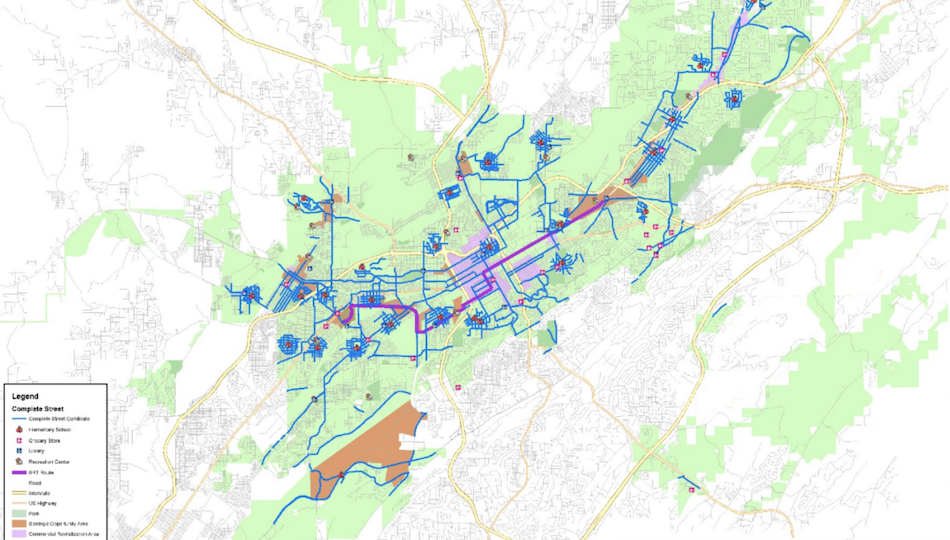Birmingham’s Complete Streets
One of Sloss Real Estate’s main focuses is to create walkable, connected, sustainable communities. Since its inception, Pepper Place has been equally dedicated to foot traffic and commuter traffic, providing free street and lot parking as well as maintaining and building sidewalks. With the exception of the downtown areas around the University of Alabama–Birmingham and the hospital, there hasn’t been a concerted effort by the city to expand the vision of walkability across the metro area. Until now.
Birmingham will soon see major changes to its roadways throughout the entire city — more dedicated bike lanes, improved pedestrian sidewalks, and enhanced equity for all users — after the Birmingham City Council unanimously approved an ordinance, which adds a “Complete Streets Policy” to the city code.
According to the Planning, Engineering and Permits Department, “Birmingham’s vision for its transportation system also supports community efforts to improve the built and natural environments and achieve better public health and fitness…[The Complete Streets Policy] involves intentionally transparent process as well as concentrating investments in ways that yield the greatest good, not only from a transportation standpoint but also for the overall quality of life.”
According to Smart Growth America, a national firm that advocates for smart neighborhood design, Birmingham has an opportunity to improve the city’s transportation infrastructure with the passage of the ordinance.
“There is no singular design prescription for Complete Streets; each one is unique and responds to its community context,” the website reads. “A complete street may include sidewalks, bike lanes (or wide paved shoulders), special bus lanes, comfortable and accessible public transportation stops, frequent and safe crossing opportunities, median islands, accessible pedestrian signals, curb extensions, narrower travel lanes, roundabouts, and more.”
After the passage of the ordinance, Councilor Darrell O’Quinn lauded the moment as “historic” and said the new policy will change the way people experience the city.
“Everyone that spoke pointed out why this will be a historic moment for Birmingham. I don’t know if most folks will realize it now, but I hope in 15 or 20 years from now people can look back and see we turned a corner here,” O’Quinn said. “Great neighborhoods are built on great relationships. Quite often in our neighborhoods, sidewalks are where that happens…As part of this, the city is developing a priority network, where we really want these type of streets to be implemented. We can’t do that on every street and it’s not going to be applied uniformly to every street. But there will be specific corridors that have these type streets.”
Often, transportation can be a major impediment for someone being able to hold a steady job, therefore continuing a cycle of poverty. Kathryn Doornbos, the executive director of Redemptive Cycles, a nonprofit that helps low-income residents have access to bikes, said she fully supports the new ordinance.
Carolyn Buck, a representative with the Freshwater Land Trust, said the new ordinance with help makes the Red Rock Trail system accessible to all 99 neighborhoods in Birmingham.
“Outdoor exercise is good for physical and mental health,” Buck said. “The Center for Disease Control granted us the Red Rock Trail master plan. It plans for parks, trails, and sidewalks that connect every community here. We want every citizen to have access to green space and can access them without the need of a vehicle. It makes outdoor recreation equitable to everyone. In order for our Red Rock Trail system to have an impact, it’s vital that people can access these points. The complete street ordinance will allow that. It will help us connect all 99 neighborhoods together.”





